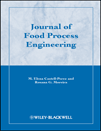AVERAGE SHEAR RATE IN A TWIN-SCREW EXTRUDER AS A FUNCTION OF DEGREE OF FILL, FLOW BEHAVIOR INDEX, SCREW SPEED AND SCREW CONFIGURATION
Abstract
ABSTRACT
Mixer viscometry assumptions were used to model average shear rate in a co-rotating twin-screw extruder. Screw speed was varied at 50, 100, 200, 300 and 400 rpm in an MPF-19APV twin-screw extruder for Newtonian and non-Newtonian fluids with different flow behavior indices (n). A composite screw configuration was used. Degree of fill was varied from 0.4 to 1.0. Also, for three separate all-one-type screw configurations, screw speed was varied from 50 to 400 rpm to estimate the average shear rate for 30° forwarding paddles, single-lead, and twin-lead screws individually for 1.0° fill. A modified matching viscosity technique was used to estimate average shear rate for all conditions.
Average shear rate was modeled as a function of extruder constant (k′), screw speed and an empirical parameter α. The k′ increased as a power-law and α decreased linearly with degree of fill. The k′ ranged from 5.7 to 45.1 sα−1 rev−α and was independent of screw speed and flow behavior index. Alpha increased with n. Average shear rates for the composite screw configuration ranged from 10.5 to 404 s−1 for fluids with flow behavior indexes of 0.24, 0.60 and 0.67, respectively. For the separate screw configurations at fill = 1.0, average shear rate at a constant screw speed was highest for 30 forwarding paddles, followed by single-lead and twin-lead screws.
PRACTICAL APPLICATIONS
Practical applications include providing a convenient method to estimate average shear rate for composite screw configurations under partial-fill conditions. Also, the study provides the basis for follow-up studies where the influence of shear on food product quality and nutritional value can be examined.




